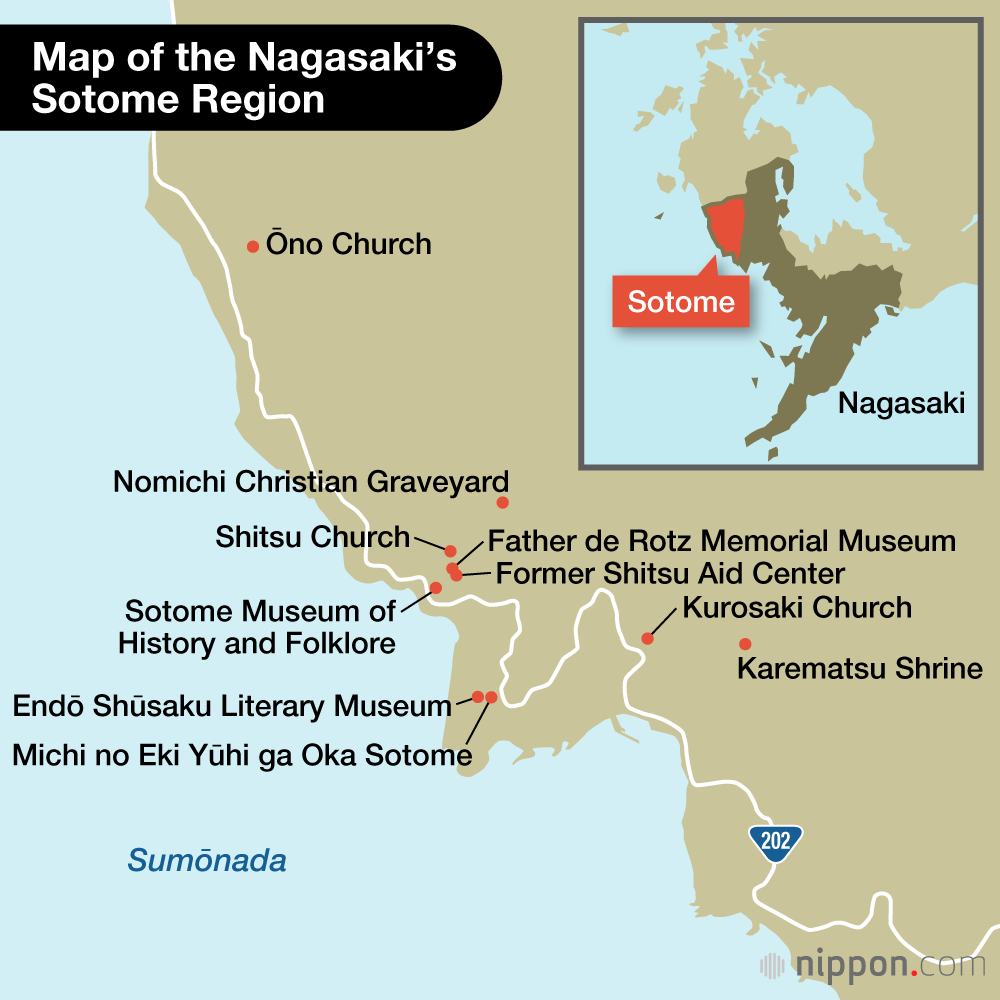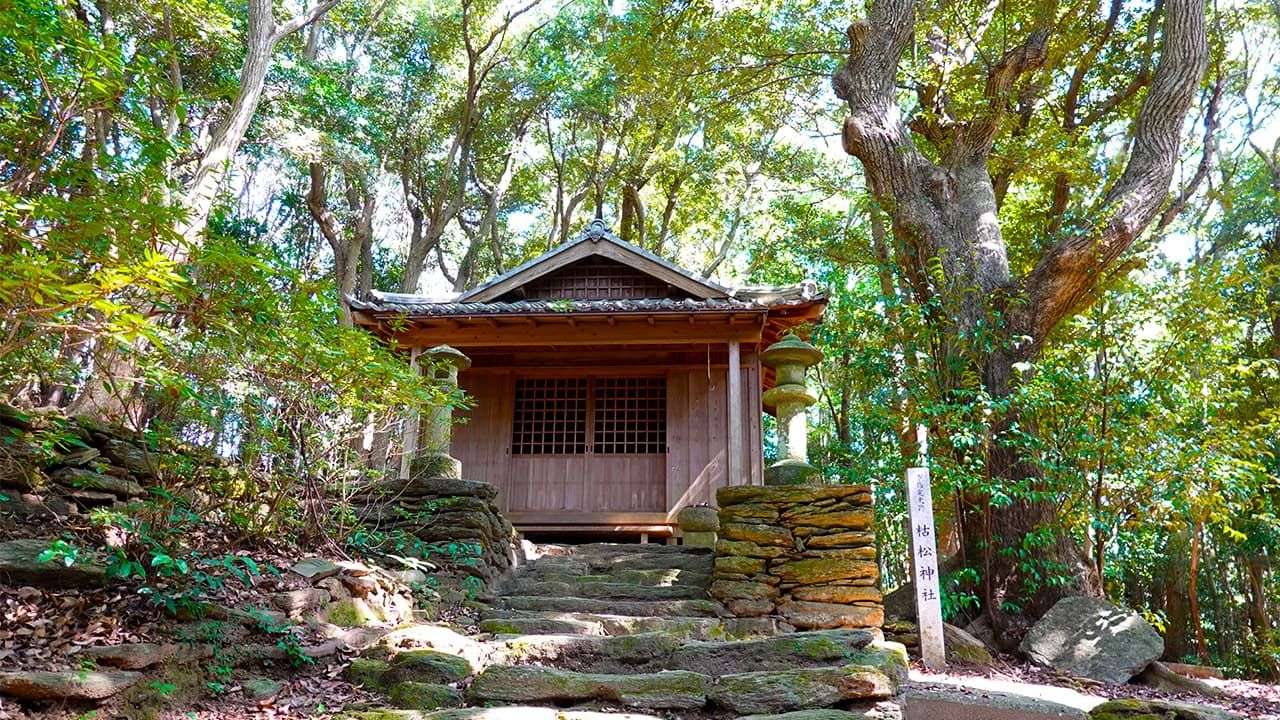
Nagasaki Sites Associated with Endō Shūsaku’s “Silence”
Following the Nagasaki Footsteps of Endō Shūsaku’s Father Rodrigues
History Culture Society Travel Guide to Japan- English
- 日本語
- 简体字
- 繁體字
- Français
- Español
- العربية
- Русский
In Search of Chinmoku (Silence) Characters
Reading Endō Shūsaku’s 1966 novel Chinmoku (trans. by William Johnston as Silence), I notice that it often uses natural imagery.
For example, there is the mountain scenery of the Nagaskai Sotome region in the first half of the story, when the character of the Portuguese Jesuit priest Sebastião Rodrigues is searching for the missing priest Cristóvão Ferreira. Many events are set in the rain, evoking the protagonist’s emotional state.
Another image is the sea. Several scenes feature Father Rodrigues talking about the sea as “the silence of God.”
Of course, Endō is not the only author to visit related locations when writing a novel, but the depth of his dedication is shown throughout Chinmoku. I grasped it better when reading a later essay by the author: “Chinmoku no koe” (The Voice of Silence).
In it Endō writes:
One thing I can say is, I am a man who loves natural imagery, and I want to experience vicariously the mountains, rivers, and seas seen by the characters I put in my novels, or for example to hear the sound of the wind. That is a powerful urge of mine. If I do not experience those things, then my confidence in writing fades. The goal of my research trips is not to gather facts. I have already looked up all the facts; they are in my head. What I am searching for in those places is the air my characters breathed, the sounds that filled their ears, the light that hit their eyes, and the scenery.
And so, I wanted to experience for my own mind the world that Rodrigues saw. I first visited Karematsu Jinja, a shrine in the district of Shimokurosaki, Nagasaki, which is said to be the model for Tomogi village, where he landed and hid.
On the map, it appeared not to be far from Nagatahama Bus stop when taking the bus from Nagasaki train station. That is six stops before the stop Michi no Eki (Bungakukan Iriguchi), by the Endō Shūsaku Literary Museum.
However, when I got off the bus and started walking, I immediately regretted not leaving at the hotel my backpack, which was filled to bursting with my camera, books, and other materials. The walk was up a long, continuous slope. Breathless, drenched in sweat, I chided myself, “Of course. It was a place of concealment for the ‘hidden Christians.’ Back in Rodrigues’s day, it would have been 100 times harder to get there.” I walked for 25 minutes, taking frequent breaks, and finally saw a sign pointing the way to the shrine entrance.
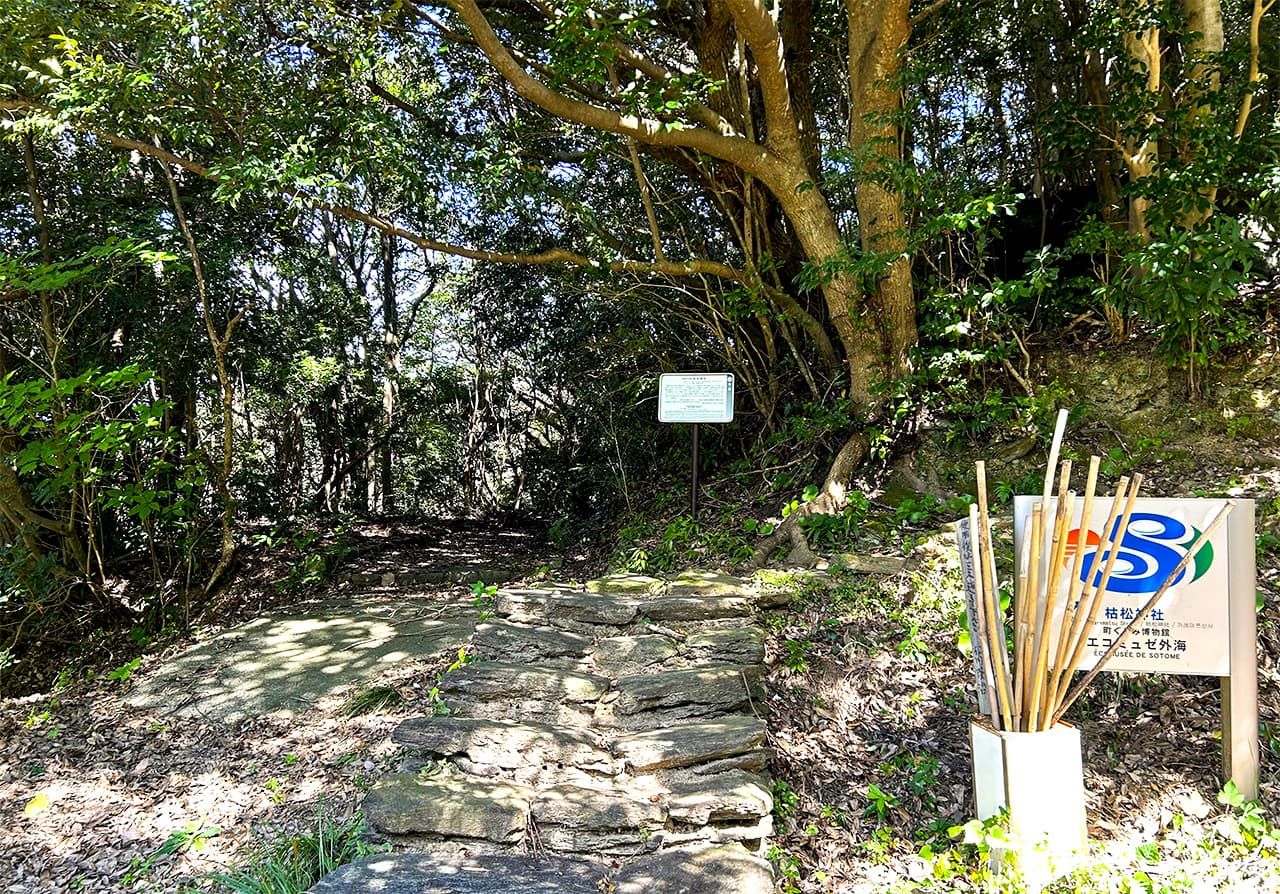
The entrance to Karematsu Jinja. From here, a five-minute walk up a stone stairway leads to the main hall. There are walking sticks for pilgrims in front of the sign. (© Amano Hisaki)
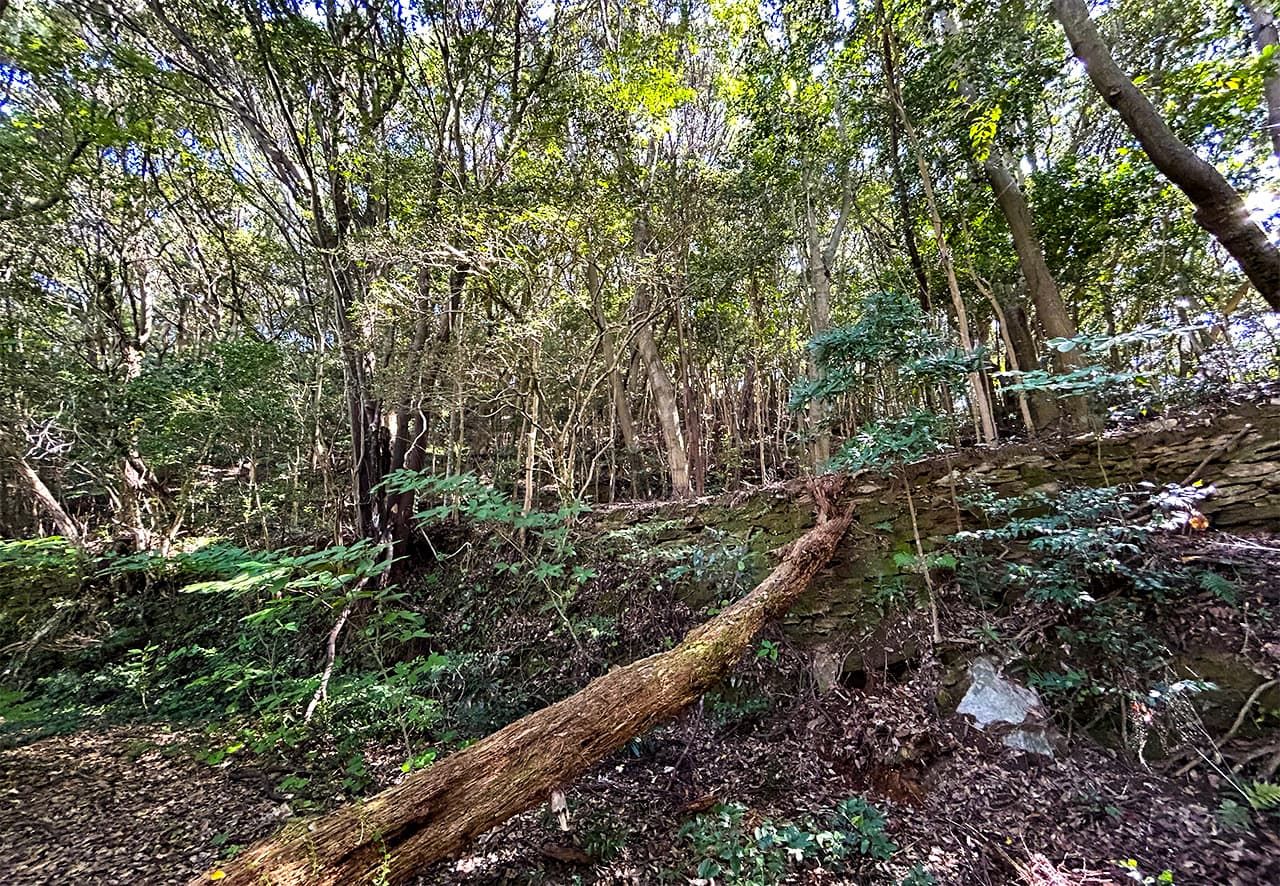
Recalling the scenery in Silence, the view around the shrine is filled with dense forest. (© Amano Hisaki)
A Native Shrine for a Foreign Faith
So, why was a Shintō shrine a hiding place for Christians?
This, in fact, is a shrine dedicated to a Christian. Such shrines are rare in Japan, and include Fuchi Jinja in Nagasaki, dedicated the late-sixteenth-century Christian woman now known as Kuwahime Daimyōjin, and a shrine to the Korean-born Christian Otā Julia, brought to Japan around the same era, on the Tokyo island of Izu Ōshima.
Long ago, this is said to have been the place where a legendary Christian missionary known as San Jiwan was martyred.
The legend goes that a Spanish Franciscan missionary, San Juan, came to Nagasaki on a trading ship in 1609. Five years later, the second Tokugawa shōgun Hidetada banned Christianity in Japan, and San Juan went on the run in the mountains of Kurosaki. He moved from place to place as he continued to serve his congregation.
In Silence, there are scenes of villagers bringing dried sweet potatoes and water to Father Rodrigues and joining Mass. They were likely inspired by these stories of “San Jiwan-sama.”
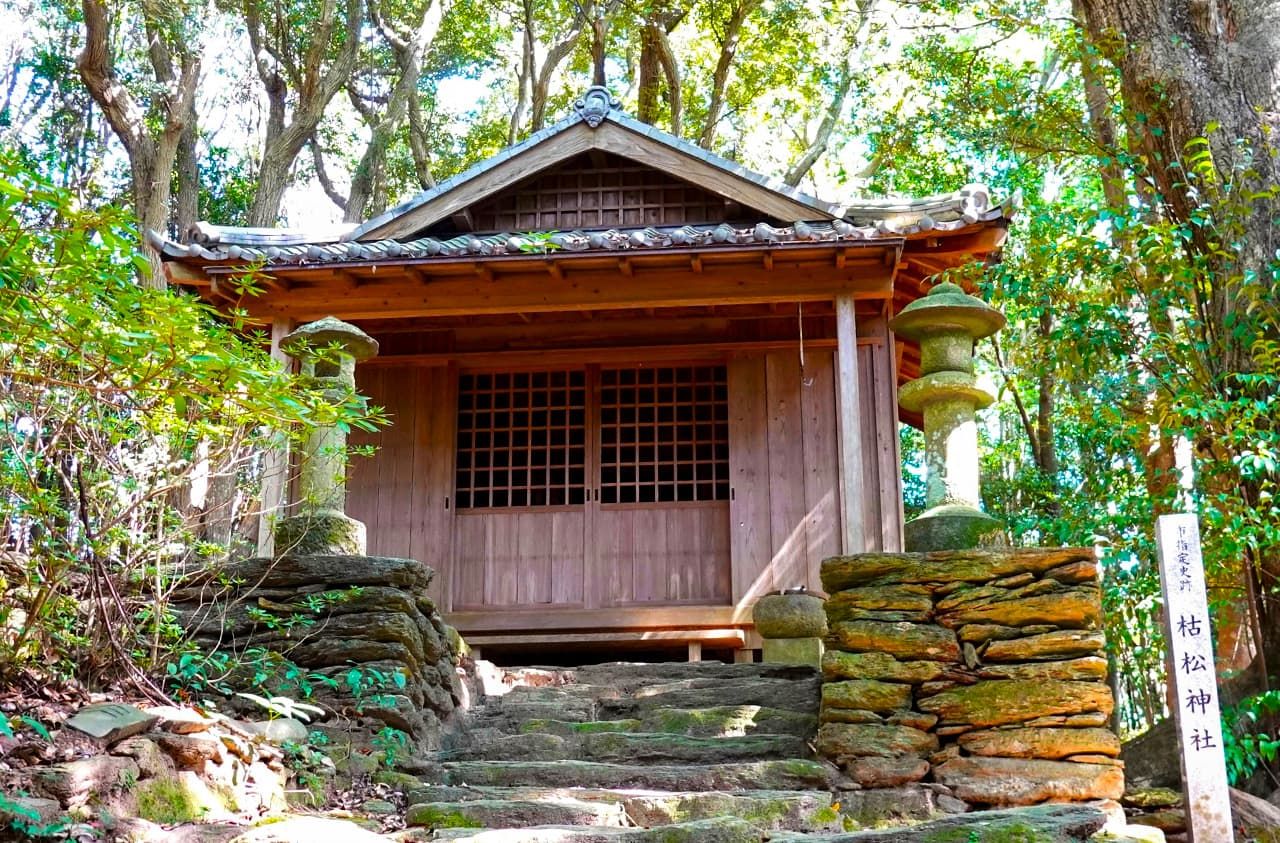
The shrine hall of Karematsu Jinja. The first official shrine was built in 1937, but the current one is a 2003 replacement. There are two smaller hokora shrines inside. (© Amano Hisaki)
In the Meiji era (1868–1912), the faithful raised a hokora shrine over the priest’s grave as a place of worship. That seems to be the origins of Karematsu Jinja.
Until the Meiji government officially ended the ban on Christianity in 1873, Japanese Catholics and their descendants were forced to camouflage their holy sites as shrines as they hid their faith behind public facades of Buddhist or Shinto worship.
Near the path approaching the shrine were flat stones, nearly buried in fallen leaves. These mark the graves of Christians. The faithful would come here to pray, making the shape of a cross out of pebbles that they could later scatter to hide the cross when prayers were finished. This was a wise practice developed to prevent others from realizing that these tombs were for Christians.
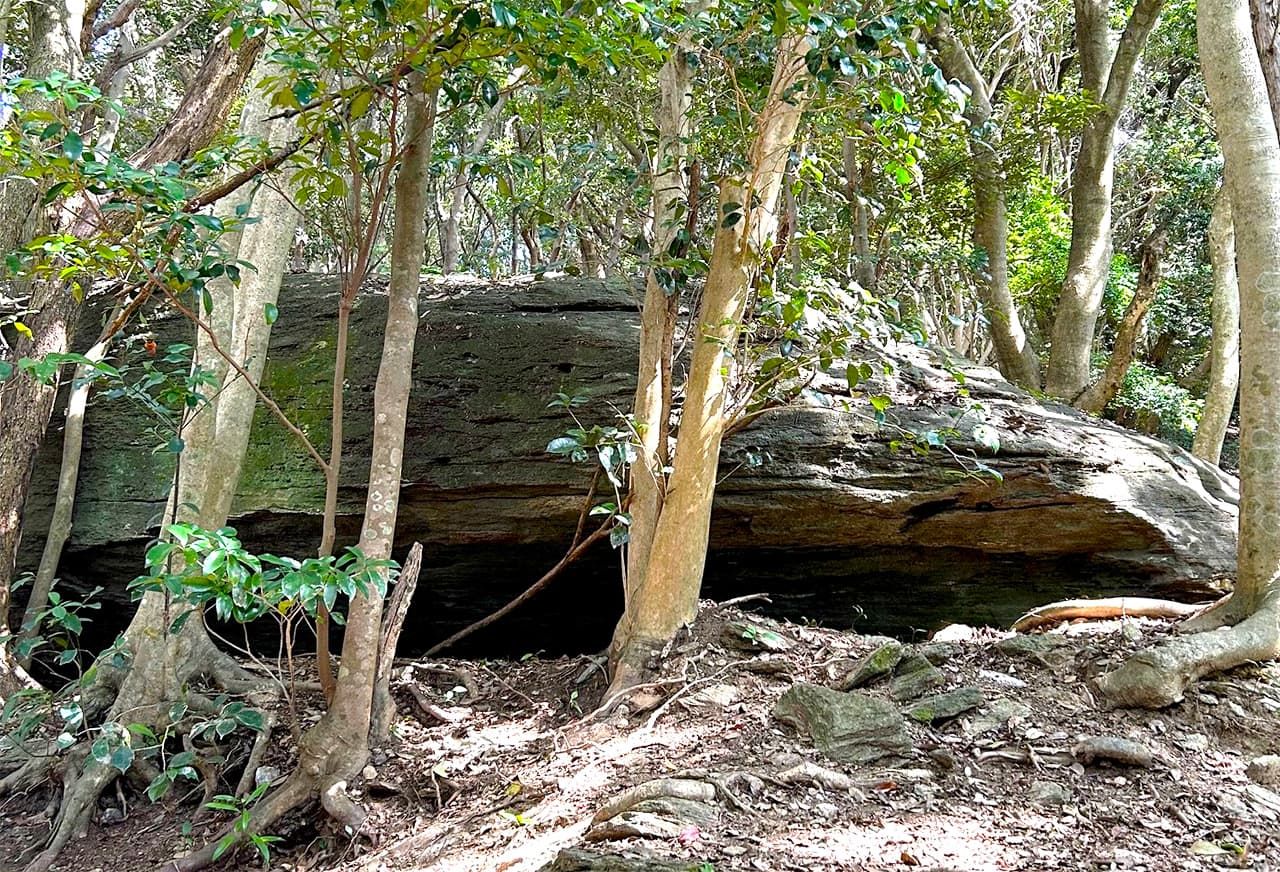
A massive boulder in front of the shrine called the “rock of prayer.” Apparently, the hidden Christians would secretly gather here during Lent to say the Oratio prayer into a hole in the rock. (© Amano Hisaki)
Father de Rotz, Beloved of Fishermen and Peasants
Next, I headed back down the slope toward Kurosaki Church, about a kilometer away. This church, one of the regional locations designated as a UNESCO World Heritage Site, was one that Endō visited before he began writing Silence. The story goes that he decided to write a novel set here after the priest told him about the hidden Christians.

A statue of the Virgin Mary with arms held out welcomes visitors to the red brick Kurosaki Church, completed in 1920. It stands next to the Kurosaki Kyōkai-mae bus stop. (© Amano Hisaki)
The area around the Endō Shūsaku Literary Museum has other historical sites and museums related to Christianity in Japan, besides Karematsu Jinja and Kurosaki Church. In the district of Shitsu, next to Kurosaki, there is the Shitsu Church, the former Shitsu Aid Center, the Father de Rotz Memorial Museum, the Sotome Museum of History and Folklore, the Nomichi Christian Graveyard, and the Chinmoku monument. The neighboring hamlet of Ōno also has Ōno Church. Both districts are registered as part of the World Heritage site.
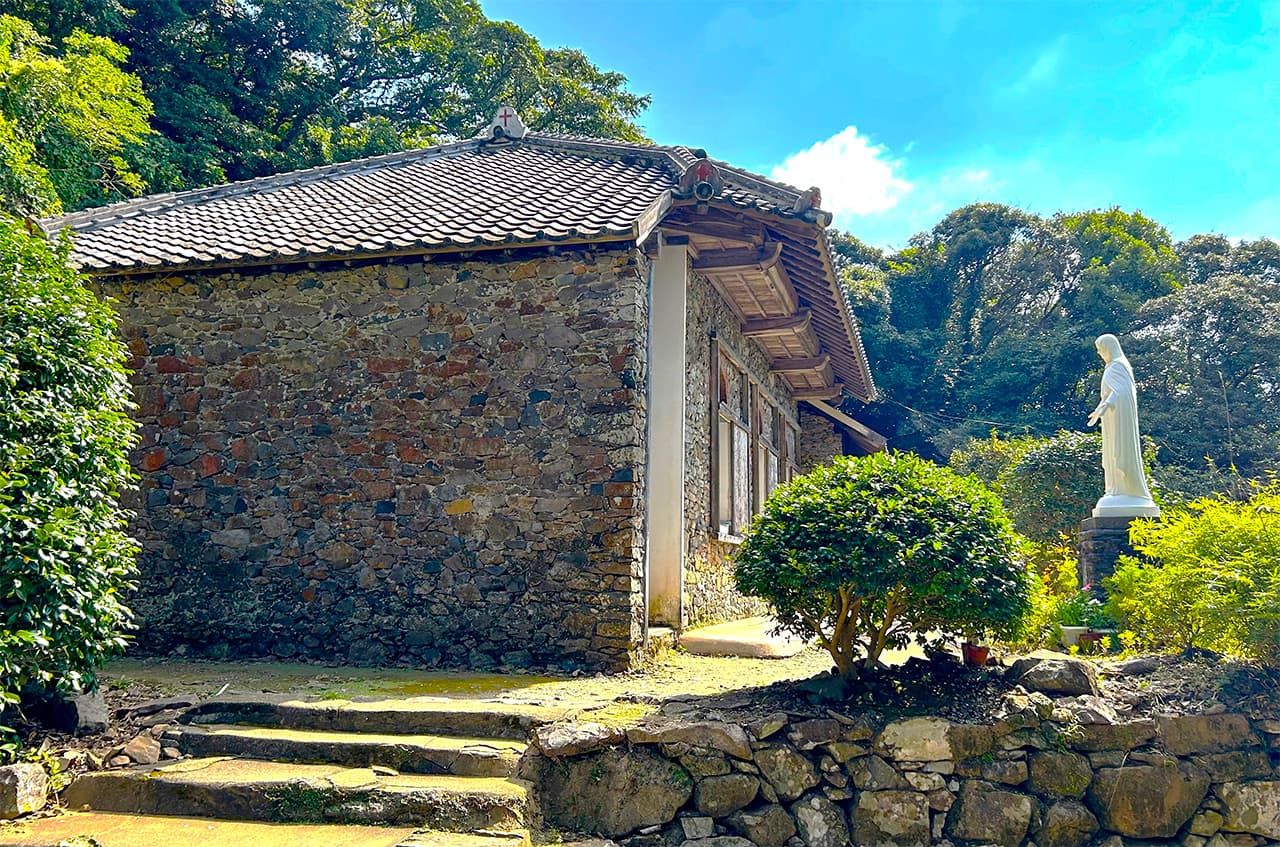
The wood and stone Ōno Church stands hidden in the woods about 10 minutes’ walk from Ōno bust stop. It was completed in 1893. If it were not for the statue of the Virgin Mary, it could be mistaken for an old farmhouse. (© Amano Hisaki)
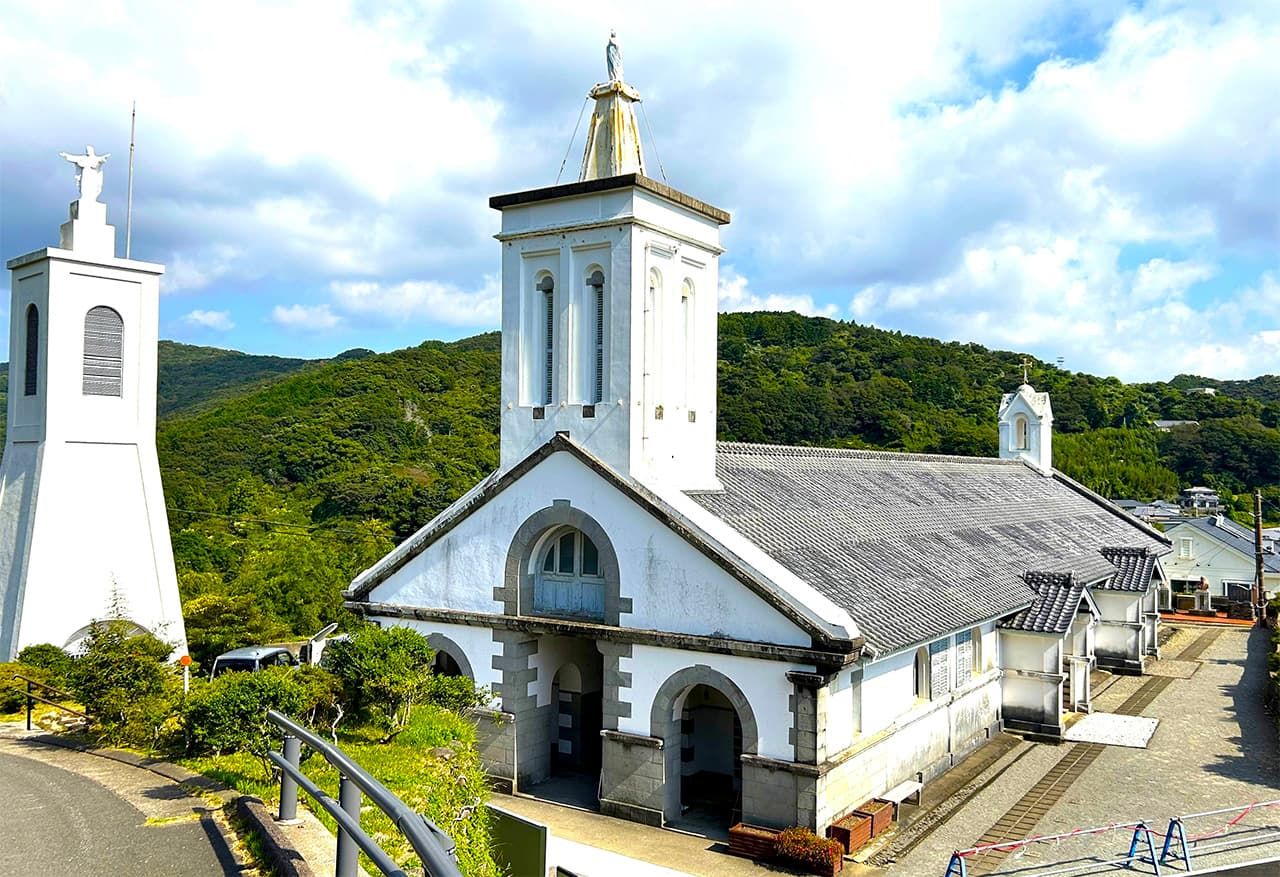
Beautiful Shitsu Church, with its dignified chalk walls and two towers, was completed in 1882. It is 20 minutes’ walk from Shitsu Bunkamura bus stop. (© Amano Hisaki)
The connection between all these historical sites is one Father de Rotz.
His full name was Marc Marie de Rotz, and he was a French priest with the Paris Foreign Missions Society. He first came to Japan in 1868 and served in the Shitsu area. Not only did he serve as a religious leader, but used his own money to fund social welfare developments for the poverty-stricken villagers.
As an aside, it appears that pasta came to Japan through Father de Rotz. The priest built a noodle factory here and worked with the villagers to make European-style pasta. You can try the unusually thick “De Rotz-sama sōmen” noodles at the restaurant inside the Michi no Eki Yūhi ga Oka Sotome, next to the Endō Shūsaku Literary Museum.
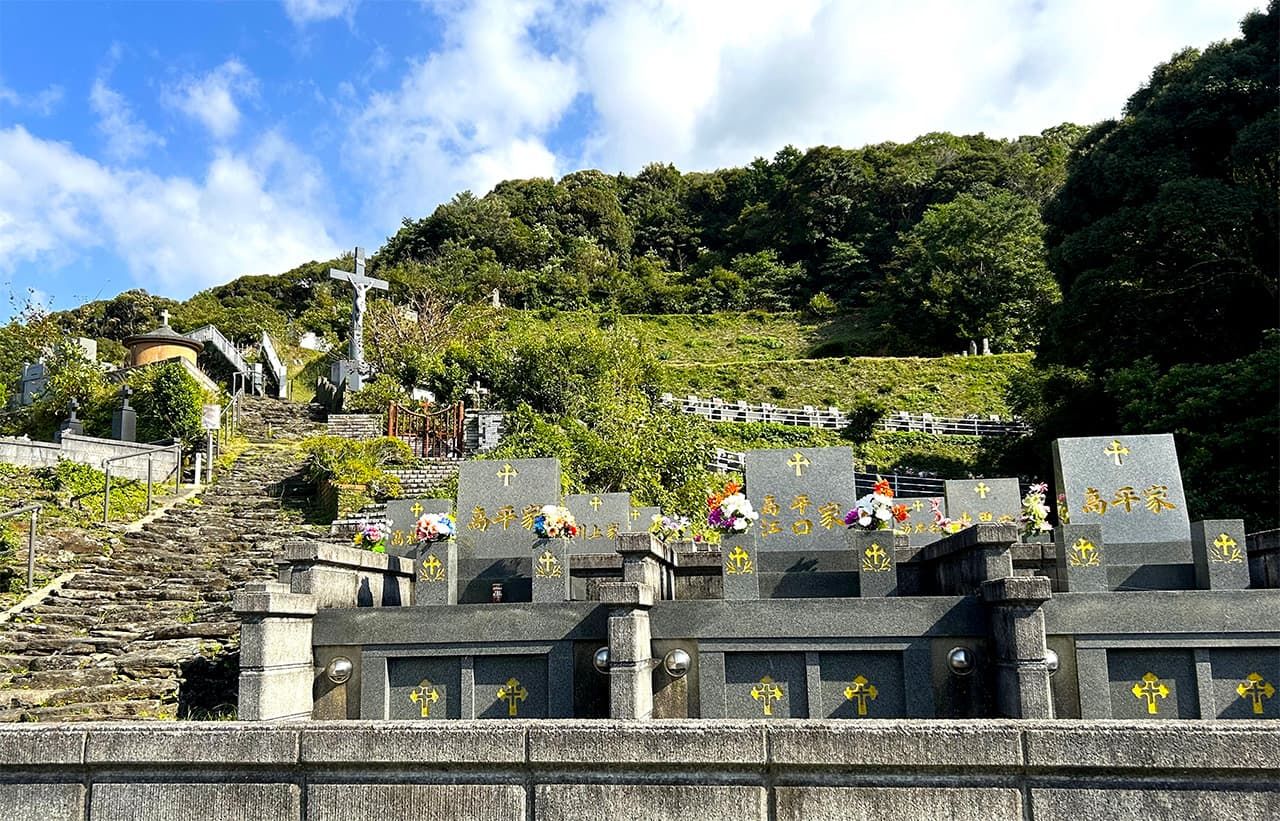
The Nomichi Christian Graveyard climbs a steep hillside in terraces and was apparently designed by Father de Rotz. For the 46 years until his death in 1914, the father stayed here without once returning to his home of France. Now, his remains rest here eternally. It is around 10 minutes’ walk from Shitsu bus stop. (© Amano Hisaki)

At the top of the graveyard’s long, precipitous stone stairway, you can see rows of the Sotome region’s unique piled-rock gravestones. (© Amano Hisaki)
Uniting Buddists, Catholics, and Hidden Christians
It has been five years since these cultural sites gained World Heritage recognition, but even as sites in central Nagasaki City like the Ōura Church are crowded with tourists from all over the world, the Sotome area is still quiet. It is a place deserving of more visitors, but that would likely require easier access. Every town is on a bus route, and the historical sites are all relatively close together, but the buses only run once per hour.
Having said that, there is value in being able to visit each of these sites more comfortably and leisurely, interacting with the locals, without the pressures of overtourism.
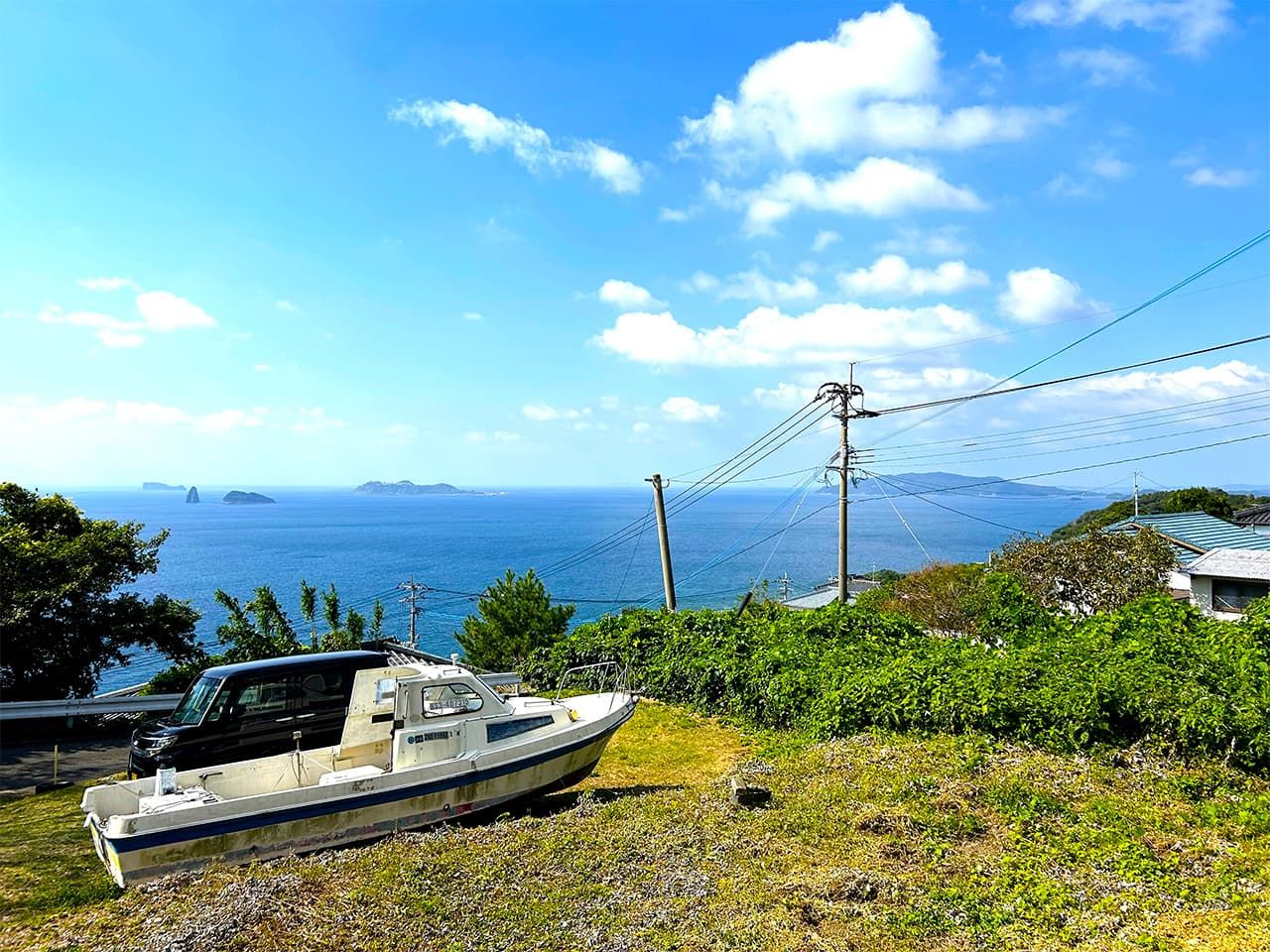
The view from Kurosaki Church toward Karematsu Jinja. A lonely fishing boat sits in a yard. (© Amano Hisaki)
Locals passing by offer little bows of greeting. When I left Kurosaki Church to head back up the hillside and take pictures, I exchanged greetings with a passing man. When I said I had come from Tokyo to see the World Heritage sites, he responded with a smile, “Oh, from Tokyo. I worked there in the family business for about ten years after I graduated high school. So, I’m good at Tokyo-ese!”
After we talked about the local specialties of yūkō—a type of citrus close to yuzu—and De Rotz-sama sōmen, I brought up the topic of Karematsu Jinja. The man said, “There’s a graveyard near the hokora that’s Buddhist and Christian both. Every autumn, the Buddhists, Catholics, and Kakure Kirishitan gather there for a communal memorial service.”
I went back to Karematsu Jinja to check, and sure enough, there was a relatively new graveyard at the bottom of a path leading off from the shrine hall. There were Buddhist and Catholic gravestones, and some monuments that looked to be Taoist.
I researched it in local newspapers and documents and found that the memorial service has been held privately every year since 2000, around November.
When the religious ban was lifted in 1873, the hidden Christians of Kurosaki split into three factions. Some joined the community of the Buddhist temple Tenpukuji; some took baptism at Kurosaki Church to become “official” Christians; and others maintained the practices of a faith that had been handed down through centuries of hiding. These last are now what is known as Kakure Kirishitan.
Ironically, the advent of religious freedom seems to have led to division and conflict in these communities. But then, in 2000, finally the Karematsu Jinja Matsuri allowed them all to come together as one. The hope, it seems, was to share a message with the world that even despite differences, we can unite.
As division sweeps across the world, this holy site for the Kakure Kirishitan is on a new path as a symbol of religious harmony.
(Originally published in Japanese. Banner photo: The main hall of Karematsu Jinja sits hidden in the mountains of Nagasaki’s Kurosaki district. It is a holy site for the Sotome area’s Christians and is dedicated to Father San Juan. All photos © Amano Hisaki.)
